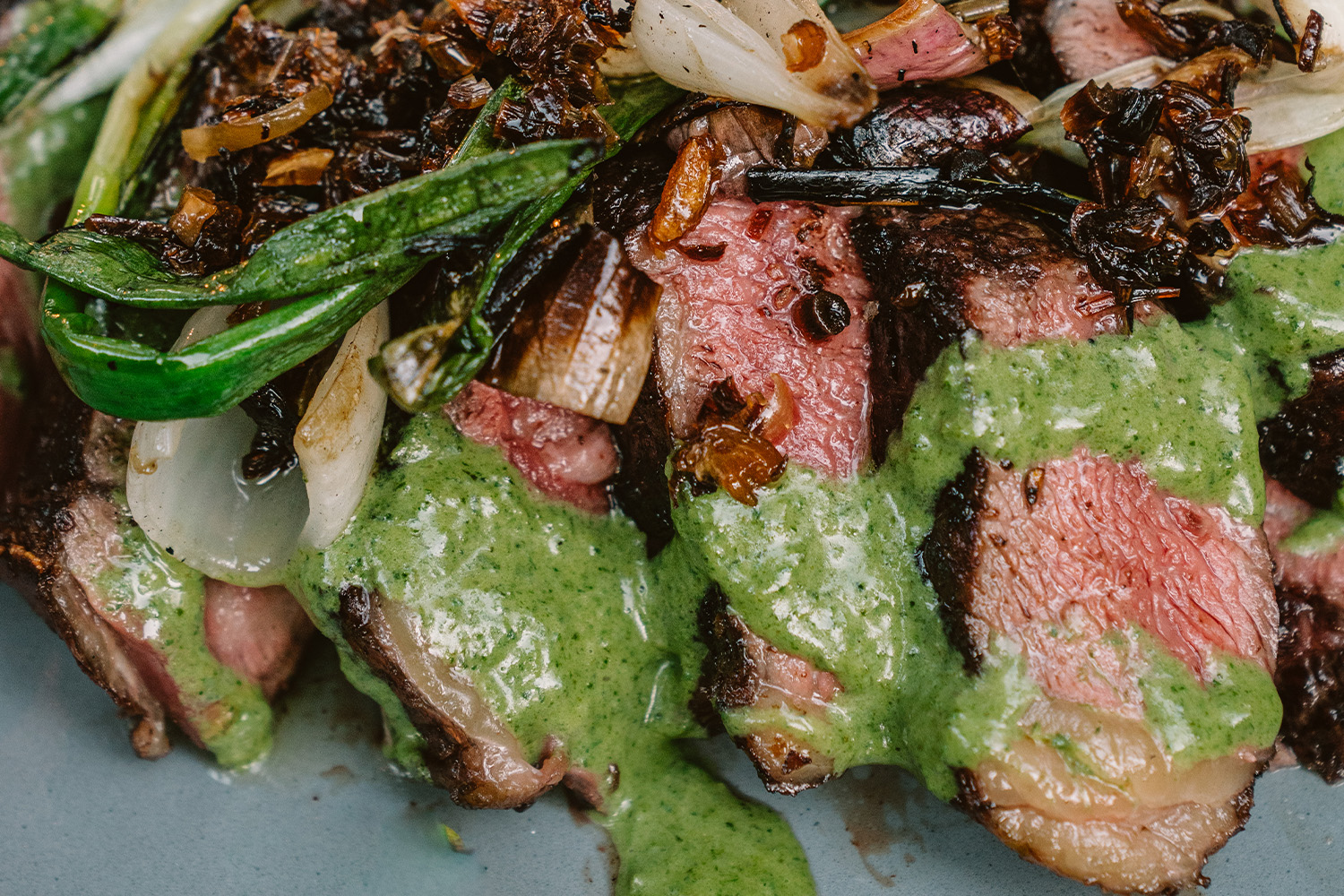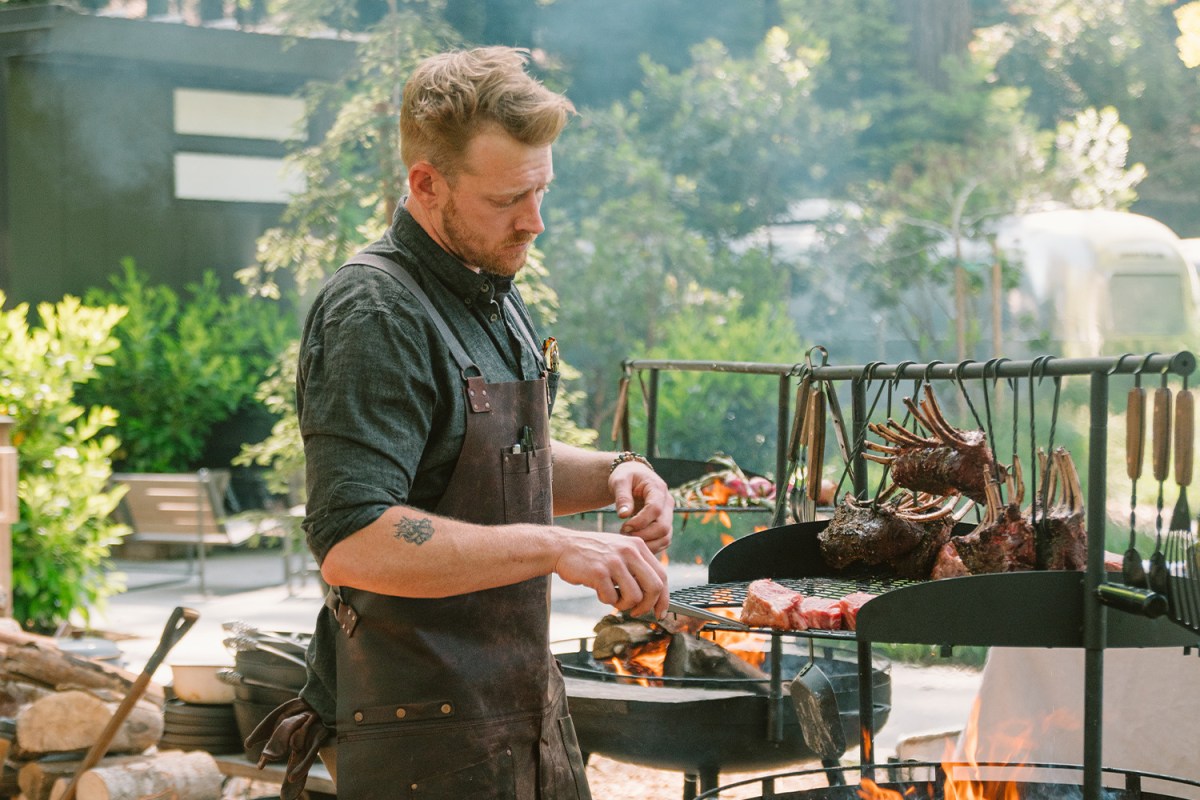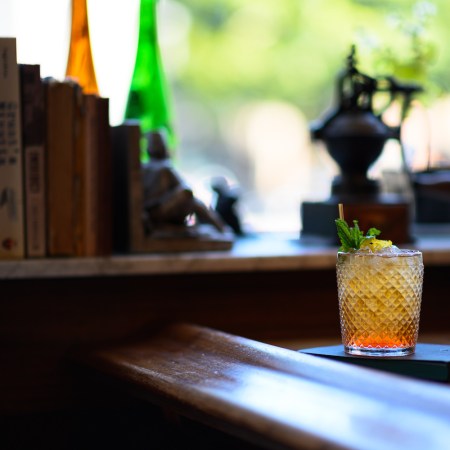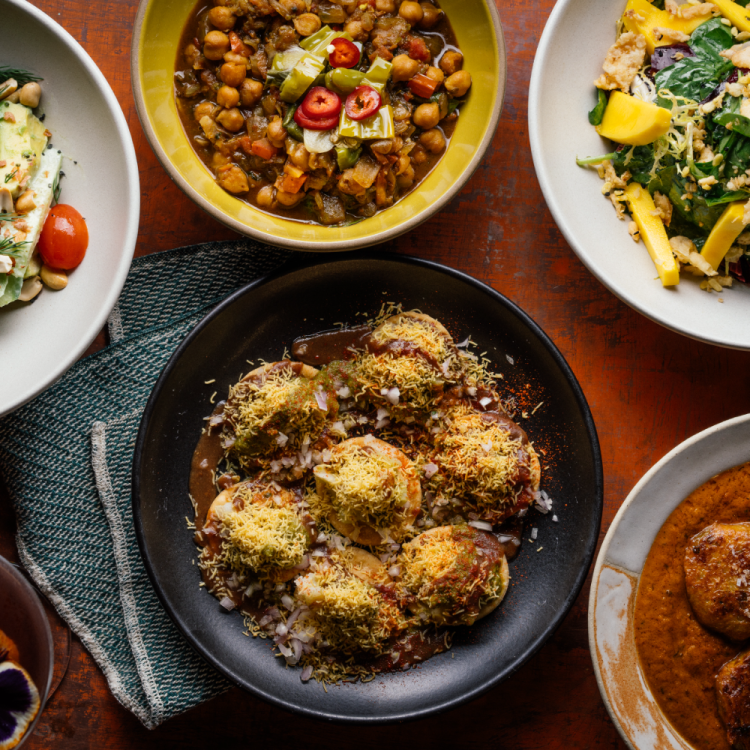Chef Kevin O’Connor has a signature item on his ingredient list that’s a bit unexpected: wood. Though O’Connor was trained in some of the most prestigious kitchens in the Bay Area, he’s since fled to the wilderness to use his culinary talents in the practice of live fire cooking, and that requires learning how to manage a fire and building a good coal bed. And just in case you’re unfamiliar with live fire cooking? It’s exactly what it sounds like. “Quality ingredients, decent wood and salt is all you need for an amazing meal,” O’Connor tells InsideHook. “Keep it simple and don’t be paralyzed by the idea of needing fancy equipment. Don’t forget that a life-changing meal you cook over a fire could have been enjoyed exactly the same way 1000 years ago.”
He cautions: Quality “doesn’t mean luxury,” though when it comes to cooking meat (and steak, in particular) O’Connor is sourcing his cuts from a company that honors the animal — and delivers the most flavor. First Light Farms, a meat company out of New Zealand, has introduced the concept of 100 percent grass-fed wagyu beef into the global market, and their results speak for themselves, flavor-wise, while also preserving a much higher quality of life for the animal. When the animals do inevitably have their “one bad day,” nearly every part of the cow is sourced and used for other products aside from steak, like collagen and hides.
But the concept of 100% grass-fed beef is extremely rare in the cattle farming world, and that quality is part of why O’Connor is drawn to the brand. “I love that First Light Farms has gone against the grain (pun intended) by actually sticking with processes that are most natural,” he says. “In this case it’s giving cows what they’re meant to eat — grass — along with plenty of sunshine and fresh air. The flavor, richness, and ‘no-duh’ ethos of grass-fed beef matched with the marbling and butteriness of wagyu was nearly unbelievable when I first tried it, and I have yet to try anything that comes close.”
First Light’s ethical sourcing and production also lines up with O’Connor’s personal values — he believes cooking seasonally, with local ingredients that he often forages himself, is the key to truly delicious food. “I would have no idea what to cook if I didn’t know what was in season and growing around me,” he said. “I may go as far to say that cooking without respect to seasonality is selfish. With an ever-changing food landscape and imminent loss of culture surrounding what we eat, it’s imperative we hold onto and share these ideas. The wild and native foods of California and other regions is what lights my torch.”
If that’s not enough to inspire you to get outside and grill some steaks yourself over a live fire, then Chef Kevin walking you through the process himself with a fool-proof, simple recipe for the perfect grilled steak should do the trick. Whether you’re out in the middle of nowhere ready to try out your foraging and live fire skills — or just heating up a grill on your own back porch — O’Connor has the key to getting that sear and juiciness just right. For this recipe, he’s recommending First Light’s Wagyu Striploin, which is available for purchase online or through their monthly steak club.
“My favorite steaks to cook, and to eat, are cut thick from the Wagyu Striploin,” he said. “Cooked over a fire and seasoned with only salt has gotten ‘…best steak of my life’ more times than I could count.” So order up a couple cuts of steak online, get a fire going, and see if you can earn that compliment for yourself.

First Light Wagyu Ribeyes with Creamed Nettles and Roasted Spring Onions
Note from Chef Kevin: Stinging nettles grow abundantly in the wild like a weed and require gloves for harvesting. The stinging compounds go away once they’re cooked. If you don’t want to risk the sting, feel free to replace nettle leaves with baby spinach.
Ingredients:
- 2 First Light 100% Grass-Fed Wagyu Ribeyes
- Kosher Salt
- First Light 100% Grass-Fed Wagyu Beef Tallow or extra virgin olive oil
- 2 red spring onions, or one medium red onion
- 1 teaspoon red wine vinegar
- 4 cups loosely packed fresh nettle leaves (or 6 cups spinach leaves)
- 1 tablespoon unsalted butter
- ¾ cup heavy cream
- Salt to taste
Instructions:
For the nettles or spinach
Start by sauteing the nettle leaves (or spinach) in a small sauce pot on medium heat with a tablespoon of butter and a pinch of salt. Cook, stirring occasionally, until the greens are wilted. Add the cream and bring to a simmer. Allow the cream and nettles to simmer together until the cream has slightly reduced (~5 minutes). Using an immersion blender, blend the cream and nettles until smooth. Check for seasoning and allow the blended nettle cream to continue simmering for an additional five minutes to thicken. Remove from heat and set aside.
For the steaks
Remove the steaks from the refrigerator to allow them to come to room temperature. Bring a large cast iron pan up to high heat. Lightly brush the steaks with a small amount of extra virgin olive oil or tallow before seasoning both sides liberally with salt. Once the pan is hot, lay the steaks in, gently compressing with your hand to make sure they’re flat against the pan. Cook the steaks for 3-5 minutes on one side, rotating a quarter turn every minute. Flip the steaks when the one side is heavily caramelized and crusty. Reduce heat slightly and repeat the process on the other side of the steak. Continue this process if needed, flipping the steak until desired internal temperature is reached. It should feel slightly firm with a bit of give when poked with your finger (135°F for medium rare). Remove the steak from the pan and allow it to rest for 10-12 minutes, flipping the steak halfway through the resting process.
For the onions
While the steaks are resting, cook the onions in the same cast iron pan. If using spring onions, cut them in half, and if using red onions cut them into quarters, leaving the base intact. Remove the beef fat from the cast iron pan, replace it with a drizzle of extra virgin olive oil and bring to a medium high heat. Cook the onions on all sides until darkly caramelized. Remove from the pan and trim the base to assist in cutting the onion into smaller layers. Place the cooked onions in a small bowl and toss with a drizzle of olive oil and the red wine vinegar. Set aside while you carve your rested steaks.
For the finish
Using a sharp knife cut the steaks, against the grain, into ½-inch thick pieces. Spoon the creamed nettle onto the plate before transferring the carved steaks. Top with the dressed onion and serve immediately.
This article was featured in the InsideHook SF newsletter. Sign up now for more from the Bay Area.
























